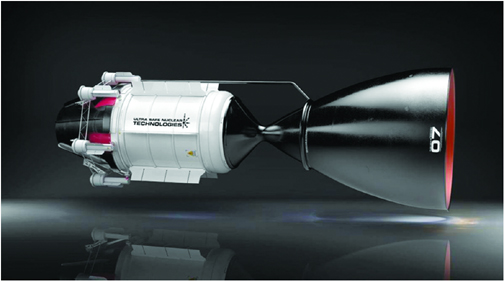
A nuclear-powered rocket could get a crewed mission to Mars in just under three months, according to a report on CNN. NASA’s plan is to get human to Mars by the year 2035, but there are several challenges to the trip. The biggest being the time it would take to get to the red planet. A prolonged trip would also mean increased exposure to space radiation, which can seriously impact the health of astronauts on the mission. Now, Ultra Safe Nuclear Technologies (USNC-Tech), a Seattle-based company, has come up with a design of a spacecraft that will use nuclear-powered rockets to shorten the trip. Currently, NASA’s goal for a one-way trip to Mars is around five to nine months.
But switching to a nuclear thermal propulsion (NTP) engine does come with its own risks, though USNC-Tech claims to have made it safe for the crew. According to Michael Eades, the director of engineering USNC-Tech, the rocket has been designed in such a way that it will store liquid propellants between the “engine and the crew area” and block out the radioactive particles to ensure the crew does not get exposed to radiation during the flight.
Jeff Sheehy, chief engineer of NASA’s Space Technology Mission Directorate told CNN that NTP rockets will “double the miles per gallon” meaning a round trip would be possible in less than two years.
But there are challenges. One is finding uranium fuel that can withstand high temperatures inside a nuclear thermal engine, according to the report. However, the company claims to solve the problem by developing a fuel that will be able to work in temperatures as high as over 2,400 degree celsius. The fuel comprises of a material known as silicon carbide which is frequently used in tank armour. It is capable of preventing radioactive products from leaking from the reactor by forming a gas-tight barrier.
Further, the report adds that the nuclear rockets will not lift off from Earth like other thermal-engine powered rockets. They will be taken to space by a regular rocket that would take it into Earth’s orbit and that’s when the nuclear-powered spacecraft will lift off. And in case something goes wrong and the rocket explodes, USNC-Tech said the pieces of the nuclear reactor would not land on Earth or any other planet as they cannot move in vacuum.





Be the first to comment